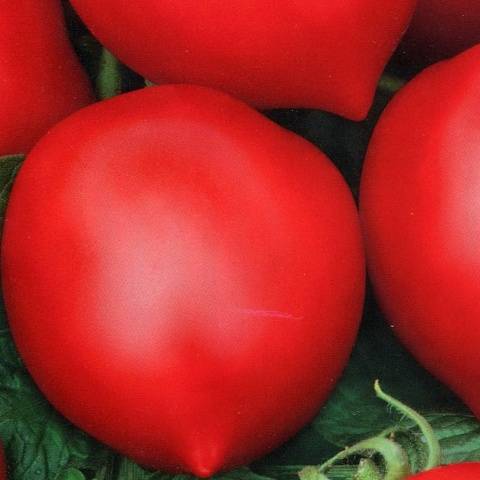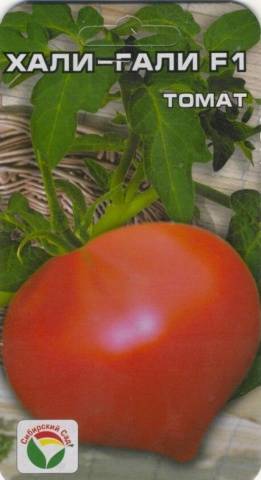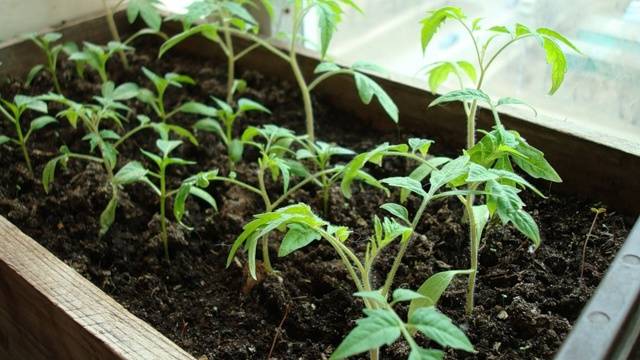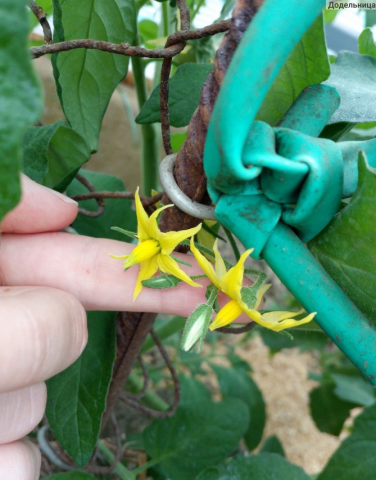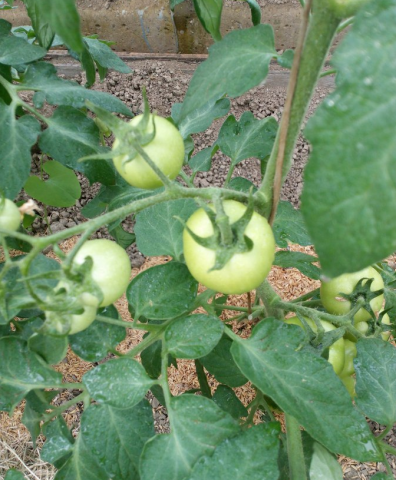Content
Both children and adults love to pamper themselves with ripe, juicy and aromatic tomatoes. Needless to say, this indispensable vegetable is included in most dishes of Slavic cuisine. Therefore, it is not surprising that every average resident who owns a summer cottage is interested in the issue of growing this crop.
This article will focus on such a variety of tomatoes as "Hali-gali". You will find out what kind of variety it is, its characteristics and cultivation features. The article will contain a photo of the Hali-Gali tomato and a video with practical advice.
Description
The Hali-Gali tomato bush belongs to the determinant varieties. The Hali-Gali variety can be grown both outdoors and indoors. This variety is grown on a small as well as a large scale.
"Hali-gali" refers to early maturing varieties. The fruits are round in shape and have a thick skin. By the time of ripening, the fruits have a weight equal to about 150 g. They are suitable for processing and fresh consumption. Taste characteristics are excellent.
From one hectare of land planted with this variety of tomatoes, you can harvest about 500 centners of the crop. If these figures are converted into percentages, then the yield will be 80%. Such results became possible due to the fact that breeders worked on the resistance of the variety to fungal diseases. The ripening period of tomato is about 3 months.
Due to the fact that the fruits have a thick skin, they are not afraid of long transportation. For a long time, tomatoes retain their taste and appearance.
The height of the bush reaches about 80 cm. The size of the leaves is medium, and the color is light. The first inflorescence appears on the seventh leaf. The top of the bush has a sharpening. It is worth noting that the yield of "Hali-Gali" largely depends on where the tomato was planted: in open or closed ground. So, in a field with 1 m2 the land on which the bushes are planted can collect about 9 kg of fruit. If at 1 m2 plant the Hali-Gali tomatoes in the greenhouse, then you can harvest up to 13 kg of crop.
Sowing of seeds should be carried out 3 months before planting in a permanent growing place. You can count on the development of a healthy bush only if the air temperature outside or in the greenhouse reaches about 25C. Seedlings should be planted at a distance of about 50 cm from each other. Bushes need additional fertilizing and agrotechnical work.
Timely garters and stalk formation will allow you to get a bountiful harvest. Grazing is an important cultivation step that contributes to higher yields.
Characteristics of tomatoes
The fruits are distinguished by their characteristic rounded shape and deep red color. Weight can vary from 70 to 150 g. It is worth noting that during the first harvest, tomatoes can reach up to 200 g each, and subsequent fruits will have less weight. 150 g of the product contains 3% sugar.
Due to the high sugar content of tomatoes, they can be used for juicing and purees. In addition, "Hali-gali" is widely used for salting and home preservation.
Advantages and disadvantages
Of the positive aspects of Hali-Gali tomatoes, we note the following:
- Resistant to unstable temperature indicators.
- Resistance to lack of moisture, so Hali-Gali can be grown even on a balcony.
- It contains a large amount of sugar, so even children like it.
- An early ripe variety that bears fruit for three months.
Among the disadvantages are only the need for regular feeding of the bushes and a relatively low yield.
Diseases and pests
Another characteristic feature of "Hali-gali", for which the variety has found its fans among gardeners, is disease resistance. To further strengthen the plant's immunity to diseases and pests, it needs to be looked after. This includes the timely watering of the bushes, airing the greenhouse if the tomatoes are grown indoors, loosening the soil and providing the greenhouse with sufficient lighting.
Hali-gali tomatoes are vulnerable to thrips and melon aphids. To combat them, gardeners most often use a special preparation "Bison". If you grow tomatoes outdoors, they may be spoiled by the Colorado potato beetle. To get rid of the pest, you can use the drug "Prestige".
Features of sowing seeds
Since the cultivation of seedlings takes from two to three months, the sowing of seeds should be carried out in late February or early March. In this situation, young bushes will survive the transplant more easily, they will hurt less and release the first inflorescences faster.
It is necessary to start picking after the seedlings reach a height of about 5 cm.
Transplanting
Early ripe "Khali-gali" bears fruit well on the southern side of the site, which is well lit. In addition, tomatoes should be planted in different locations each year to achieve the best yields. Otherwise, diseases that survive the winter in the ground will be transmitted to the newly planted bushes. The quality and quantity of the crop will suffer.
Tomatoes thrive better on the ground where roots, legumes and green crops have previously grown. The soil after potatoes is not suitable for growing tomatoes.
If you have a small garden, then several varieties of tomatoes can be planted on one bed. Seedlings can be planted in open ground after the frost ends, namely in the first half of June. If we are talking about planting in a greenhouse, then the seedlings can be transplanted in mid-May.
The soil temperature when transplanting Hali-Gali tomatoes should be at least 15 ℃. The period for planting seedlings in open ground may differ depending on where you live. For example, in the non-black earth zone, tomatoes are planted in the garden in the first decade of June, and in the greenhouse - in the last decade of April. 1 m2 no more than 6 bushes can be planted.
Low-growing tomato varieties are planted at a distance of 40 cm from each other, and tall varieties are planted at a distance of 50 cm.
When planting, the stems are placed vertically, deepening the earthen pot so as not to bury the growth point of the culture. After planting, the tomatoes should be watered abundantly.
Growing
Caring for determinant varieties consists in the following manipulations:
- Hilling is performed several times. The first time it needs to be carried out two weeks after planting the seedlings. The next hilling is carried out after another 14 days and so on 2 more times.
- The soil should be loosened regularly, since throughout the entire growing period the soil around the root system should remain airy.
- Watering is carried out as needed.
- Grasshopping allows you to form a bush for 1 or more shoots. Throughout the entire period of development of the bush, axillary inflorescences should be removed, since they take away strength from the bush, as a result of which the yield of tomatoes decreases. For the same purpose, the lower leaves are also removed.
- Fertilization is carried out 2 weeks after planting in open ground or in a greenhouse. The next fertilization is carried out after the appearance of the second inflorescences.
Basic care
Hali-gali tomatoes develop well if organic fertilizer is applied under the bushes, for example, a solution of urea or mullein. For the second feeding, phosphorus-potassium fertilizers are used. Dilute them according to the instructions for the preparations.
As mentioned above, tomato bushes of the "Hali-gali" variety need to be pinned. It's no secret that stepsons can grow in the same place, so when you first remove them, you should leave small stumps.
The importance of watering cannot be underestimated. This is especially important to do during the period of intensive growth of bushes and flowering. During the fruiting period, watering should be reduced, otherwise the fruits of the tomatoes will crack. Watering is carried out only at the root.
We also offer you to watch a thematic video on how to grow tomatoes on the balcony:
